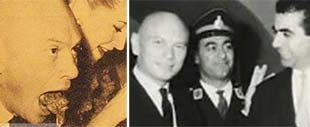The Book of Esther
The Book of Esther is a famous chapter of the Old Testament in which it is said that she marries Xerxes with the help of her uncle Mordecai and succeeds in using her position to eliminate the threat that was aimed at her co-religionists. However, there are many doubts and disagreements about the correspondence of the legend of Esther with historical facts. The character of Esther has a mythical and religious value for the Jews of Iran and the world, and her story and her tomb symbolize their connection with the land of Iran and are one of the reasons for the attraction of the Jews of the world to the history of Iran.
The arrival of Islam in Iran
In the Islamic era, the main centers of Jewish settlement were in Iraq and cities such as Sura, Pompeii, and Ctesiphon, and later in cities in Iran, including Hamadan, Nahavand, Gandi Shapur, Susa, Testar, and areas such as Qohestan and Jurjan. Another Jewish settlement area was a place called Yehudiyah in the land of Isfahan, which Ahmad ibn Yahya Balazari has mentioned in the peace treaty that was signed in Yehudiyah during the conquest of Isfahan.[4]
After Islam, Jews, like other religious minorities, were forced to pay a tax. Although restrictive laws such as the ban on building synagogues, forcing synagogues to be shorter than mosques, not carrying weapons, and wearing special clothing were occasionally implemented against Jews, the situation of Jews in the Islamic state was still much better than in the Eastern Roman Empire.[4]
The Islamic Caliphate
During the time of the Rashidun Caliphs and later during the Umayyad and Abbasid periods, Jews began a new era of cultural and social life. During this period, the political and social leadership of the Jews was the responsibility of a person named Ras Goliath, who was recognized by the caliphate. Ras Goliath was chosen from among one of the heads of religious schools in the cities of Pombedita and Sura, who were known as Gaons or Gaons. In addition to paying the jizyah, the Jews of Iran also sent donations to the Gaon, and in return, the Gaon sent Jewish judges and priests to govern the communities and perform rituals for these people. These same envoys made Hamadan and Isfahan major Jewish cultural centers in the 6th century AH.[4]

